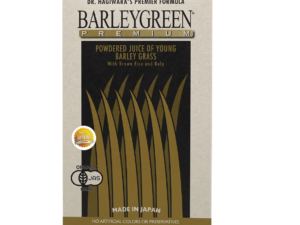Did you know that 1 in 3 people struggle with digestive discomfort? Bloating affects millions, making daily life uncomfortable. Wellness Group understands these challenges and offers science-backed solutions to improve gut health naturally.

A balanced diet plays a crucial role in digestive wellness. Certain nutrients support regularity and ease discomfort. Wellness Group specializes in guiding individuals toward smarter food choices for long-term relief.

Click to LEARN MORE
Many overlook the power of gradual dietary adjustments. Small changes can make a big difference in how the body processes food. This article explores practical ways to enhance well-being through mindful eating habits.
Key Takeaways
- Bloating affects a significant portion of the population.
- Proper nutrition supports digestive system function.
- Wellness Group provides expert health guidance.
- Gradual dietary changes yield better results.
- Both soluble and insoluble nutrients aid digestion.
Understanding Abdominal Bloating and Its Causes
Bloating isn’t just about overeating—it’s a complex digestive response. That tight, swollen feeling often stems from gas buildup, food intolerances, or even hormonal shifts. Identifying the root cause helps manage discomfort effectively.
What Triggers Bloating?
Gas accumulation tops the list. When gut bacteria ferment undigested carbs, excess gas forms, stretching the digestive tract. Common culprits include:
- Carbonated drinks (fizz traps air in the stomach).
- High-FODMAP foods like onions and beans (ferment quickly).
- Lactose intolerance (undigested dairy fuels gas production).
Constipation worsens bloating. Slow-moving stool lets bacteria linger, producing more gas. A low-fiber diet or dehydration often triggers this cycle.
The Role of Digestion in Bloating
Hormones like estrogen cause water retention, especially during menstruation. This temporary bloating differs from chronic issues linked to digestive disorders like IBS.
Occasional post-meal puffiness is normal. But persistent bloating with pain or irregular bowel movements may signal deeper imbalances. Tracking food intake and symptoms helps pinpoint triggers.
How Fiber Helps Reduce Bloating
Bloating relief starts with understanding how different fibers work in the body. While both types support digestion, they tackle bloating in unique ways. Choosing the right balance can ease discomfort and improve gut health.

Soluble vs. Insoluble Fiber
Soluble fiber dissolves in water, forming a gel that softens stool and slows digestion. Oats and apples are great examples. This type helps reduce gas by feeding gut bacteria evenly.
Insoluble fiber adds bulk to stool, preventing constipation. Whole grains and carrots speed up waste movement. Together, they prevent “double bloating”—trapped gas and sluggish bowels.
| Type | Function | Best Sources |
|---|---|---|
| Soluble | Softens stool, reduces gas | Beans, lentils, chia seeds |
| Insoluble | Adds bulk, prevents constipation | Brown rice, kale, nuts |
Fiber's Impact on Gut Health
A healthy gut microbiome thrives on fiber. Beneficial bacteria ferment it, producing short-chain fatty acids that strengthen the digestive system. Studies show low-FODMAP diets, rich in soluble fiber, cut IBS symptoms by 45%.
“The gut microbiome shifts rapidly with dietary changes. Gradual fiber intake allows bacteria to adapt without excessive gas.”
The USDA recommends 25–38g daily, but sudden spikes can backfire. Start with small increases and drink plenty of water. Hydration helps fiber move smoothly, minimizing bloating risks.
Top Fiber-Rich Foods to Combat Bloating
Choosing the right foods can transform digestive comfort. Nutrient-packed options support regularity while minimizing discomfort. This guide highlights the best picks for a happier gut.
Best Soluble Fiber Sources
Soluble varieties dissolve slowly, reducing gas buildup. These gentle options are ideal for sensitive stomachs:
- Avocados (7g per serving): Creamy and rich in potassium.
- Apples (with skin): Pectin aids bowel movements.
- Chia seeds: Expand in liquid, promoting fullness.
- Oats (4g per ½ cup): Soak overnight for easier digestion.
- Bananas (3g each): Balance fluids and ease transit.
*Pro tip*: Pair with probiotic products like yogurt to boost gut bacteria. Fermented foods enhance nutrient absorption.
Insoluble Fiber Powerhouses
These add bulk and speed up digestion. Ideal for preventing constipation:
- Carrots: Crunchy and rich in vitamin A.
- Celery: High water content aids hydration.
- Brown rice: A staple for steady energy.
“Soaking lentils overnight cuts gas-causing compounds by 50%.”
| Swap This | For This | Why It Works |
|---|---|---|
| Broccoli | Zucchini | Less likely to cause gas |
| Cauliflower | Cucumber | Higher water content |
| Raw onions | Cooked spinach | Gentler on digestion |
Introduce high-fiber items gradually. Sudden spikes in intake may overwhelm the digestive system. Start with small portions and monitor your body’s response.
Balancing Fiber Intake for Optimal Digestion
Finding the right balance of nutrients can make digestion smoother and more comfortable. While many focus on adding more, overdoing it can backfire. Tailoring amounts to individual needs ensures the body reaps benefits without discomfort.
Daily Recommendations by Gender
Most people fall short of their daily goals. The Academy of Nutrition and Dietetics suggests:
- Women: 25g (about 14g per 1,000 calories).
- Men: 38g for optimal digestion and weight management.
Only 10% meet these targets. Tracking apps like MyFitnessPal help monitor progress.
Warning Signs of Overconsumption
Too much too soon strains the digestive system. Watch for these symptoms:
- Abdominal pain or cramping.
- Mineral deficiencies (calcium, iron).
- Dehydration from insufficient water intake.
“Sudden spikes in fiber intake can shock the gut. Slow adjustments let bacteria adapt.”
| Strategy | Why It Works |
|---|---|
| Add 5g weekly | Reduces gas and bloating effects |
| Pair with carbs | Lowers gas risk vs. protein-heavy meals |
Hydration is crucial. Aim for 8 glasses of water daily to help the body process nutrients efficiently. Listen to your body’s signals—it knows best.
Lifestyle Changes to Support Fiber's Benefits
Supporting gut health goes beyond diet—lifestyle choices matter just as much. Simple adjustments to daily routines can enhance digestion and minimize discomfort. Here’s how to pair smart habits with nutrient-rich foods for lasting results.
Hydration and Fiber
Water binds with soluble nutrients to create soft, easy-to-pass stools. Without enough fluids, the body struggles to process them, raising the risk of constipation. Aim for one glass per 10g consumed to keep things moving smoothly.
Dehydration worsens bloating by slowing the digestive system. A 7-day challenge can help build habits:
| Time | Water Intake | Tip |
|---|---|---|
| Morning | 1 glass (warm) | Stimulates digestion |
| Pre-meal | ½ glass | Prevents overeating |
| Post-meal | ½ glass | Aids nutrient absorption |
“Walking 10 minutes post-meal reduces gas better than medication.”
Exercise for Digestive Health
Movement keeps the body’s system active. A short walk after meals cuts gas by 30%. Yoga poses like Child’s Pose gently compress the abdomen, releasing trapped air.
- Smoking cessation: Reduces bloating by improving gut motility.
- Yoga flow: Try Cat-Cow or Seated Twist for 5 minutes daily.
- Consistency: 150 minutes of weekly exercise lowers disease risk.
Small steps add up. Pair hydration with movement for a happier gut.
Common Mistakes When Increasing Fiber
Many people unknowingly sabotage their digestive health when adjusting their nutrient intake. Rushing the process or overlooking key details can worsen bloating and gas. Here’s how to avoid the top pitfalls.

Skipping water is a major misstep. Nutrients absorb liquids, and dehydration leads to constipation. Aim for an extra glass per 10g consumed.
Ignoring food intolerances compounds issues. For example, pairing high-fiber foods with dairy or gluten may trigger symptoms. Track reactions with a food diary.
“Fiber bars with artificial sweeteners often cause more gas than whole foods. Read labels carefully.”
Cooking vegetables breaks down tough fibers, easing digestion. Lightly steaming carrots or zucchini reduces gas risk by 40% compared to raw versions.
Hormonal shifts matter too. Women may need to adjust intake before menstrual cycles when water retention peaks. A 20% reduction during this window can help.
| Mistake | Fix |
|---|---|
| Overdoing supplements | Prioritize whole foods like oats or lentils |
| Combining with protein | Space out meals by 2 hours |
A case study showed success with gradual adaptation. One participant increased intake by 5g weekly, pairing it with probiotics for gas relief. Within a month, bloating dropped by 60%.
When to Seek Professional Help for Bloating
Bloating that doesn’t improve with dietary changes may signal a deeper issue. Persistent discomfort paired with alarming symptoms warrants medical attention. Recognizing these warning signs early can prevent complications.
Red flags include bloody stool, unexplained weight loss, or severe pain. These could point to conditions like Crohn’s disease or ovarian cancer. Nighttime discomfort or vomiting with bloating also requires evaluation.
Diagnostic tests help identify root causes:
- Colonoscopy: Examines the colon for abnormalities.
- SIBO breath tests: Detects bacterial overgrowth.
- Blood work: Checks for inflammation or nutrient deficiencies.
“Unexplained bloating lasting over three weeks merits professional assessment—early intervention improves outcomes.”
Wellness Group offers convenient consultations via WhatsApp (+60123822655). Their team operates Monday-Friday (9:30am-6:30pm) and weekends (10am-5pm). Keeping a food and symptom diary before appointments helps pinpoint patterns.
| Symptom | Possible Condition | Action |
|---|---|---|
| Blood in stool | IBD or colorectal issues | Urgent evaluation |
| Fever + bloating | Infection | Antibiotics may be needed |
Don’t ignore persistent changes. What starts as occasional discomfort could develop into a chronic disease without proper care. Trust your instincts—if something feels off, seek guidance.
Conclusion
Smart nutrition choices pave the way for lasting digestive comfort. A balance of fiber types, gradual intake, and proper hydration helps manage bloating effectively. For personalized guidance, Wellness Group offers expert support.
Their team is available Monday–Friday (9:30am–6:30pm) and weekends (10am–5pm). Busy schedules? Weekend consultations make it easy to prioritize long-term health.
Ready for relief? Message Wellness Group on WhatsApp (+60123822655) for a tailored plan. Your journey to better digestion starts today.
FAQ
What foods can help ease gas and bloating?
Foods like oats, chia seeds, and bananas are rich in soluble fiber, which supports digestion. Insoluble fiber sources like whole grains and leafy greens also help regulate bowel movements.
How does hydration affect digestion when eating high-fiber meals?
Drinking enough water helps dietary fiber move smoothly through the digestive tract, preventing constipation and reducing discomfort. Aim for at least eight glasses daily.
Can too much fiber worsen bloating?
Yes, rapidly increasing intake may cause gas and discomfort. Gradually add fiber-rich foods and monitor how your body responds to avoid side effects.
What lifestyle habits improve gut health alongside fiber?
Regular exercise, mindful eating, and managing stress contribute to a healthy digestive system. Movement helps stimulate digestion and reduce trapped air.
When should someone see a doctor about persistent bloating?
If symptoms like pain, weight loss, or irregular stools persist, consult a healthcare professional. It could signal conditions like irritable bowel syndrome or other digestive issues.





